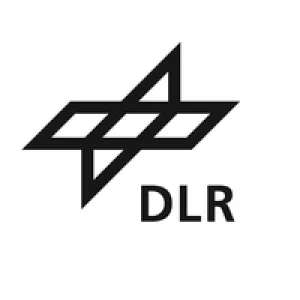

GERMAN AEROSPACE CENTER (DLR)
DLR is the German research and technology centre for aeronautics, space, energy, transport, security and defence. A broad spectrum of results and innovations bring benefits for industry, authorities and other stakeholders.
Cologne, North Rhine-Westphalia, Germany
Aerospace
+49 2203 6010
Products & Services
People
About
Products & Services
Maritime Situation Image
German Aerospace Center (DLR)
The DLR exhibit "Maritime Situation Image" at the Seoul ADEX 2025 uses a VR presentation to illustrate how the use of maritime situation images can be utilised for the protection of maritime infrastructures. Three subject areas are presented and explained: the ‘SeaCat’ autonomous underwater vehicle (AUV) concept on object detection in the underwater area, the topic muon tomography, i.e. the use of cosmic radiation (muons) for the tomographic examination of objects such as freight containers, and Distributed Acoustic Sensing (DAS) on the detection of ships and submerged objects using fibre optic cables on the seabed.
Neustrelitz Receiving Station
German Aerospace Center (DLR)
Neustrelitz is located 100 kilometres north of Berlin. Here, DLR receives data from the German radar missions TerraSAR-X and TanDEM-X, the KOMPSAT satellites of the Korean Aerospace Research Institute (KARI), the European Sentinel fleet and the American Landsat series, among others. The multi-antenna and multi-mission configuration of the ground station allows information products to be delivered to customers within minutes after data reception. These include products for national and European authorities for maritime safety, such as wind and sea state estimates, ice classification, ship navigation through ice-covered waters, detection of navigation irregularities or oil spills as well as the space weather. The Neustrelitz ground station offers data reception in the S, X, and Ka bands as well as data uplink in the S and X bands.
GESTRA
German Aerospace Center (DLR)
Whether satellites, spacecraft or space debris – GESTRA, the "German Experimental Surveillance and Tracking Radar", is a state-of-the-art radar system for observing and tracking objects in space. It operates in the microwave range and explores the Low Earth Orbit of 300 to 3,000 kilometres, i.e. the range in which most satellites and the International Space Station (ISS) are located. This makes it possible, for example, to protect space systems or the ISS from a collision with debris particles by providing a timely warning. Millions of tiny particles orbit the earth and, at a speed of around 28,000 km/h, pose a threat to active space technologies. GESTRA was developed and built by the Fraunhofer Institute for High Frequency Physics and Radar Techniques FHR on behalf of the German Space Agency at DLR.
HAP-alpha
German Aerospace Center (DLR)
Between Earth and space: stratosphere-compatible, solar-powered high-altitude aircraft, known as HAPs (High Altitude Platforms), offer a sustainable alternative to satellites for Earth observation and communication. They are reusable, cost-effective and flexible in use. The DLR joint project HAP-alpha is developing such a technology demonstrator and is endeavoring to establish a complete system capable of permanent operation. The aim is for DLR to build up comprehensive expertise for the development of high-performance, high-flying solar aircraft and to play an active role in shaping the legal framework. In summer 2025, the HAP-alpha successfully passed a ground vibration test.
About
DLR is the German research and technology centre for aeronautics, space, energy, transport, security and defence. A broad spectrum of results and innovations bring benefits for industry, authorities and other stakeholders. DLR fulfils its responsibility to society through an intensive exchange of knowledge and targeted technology transfer. Security is a fundamental human need and a pressing challenge for today's interconnected, globalised society and economy. DLR's security and defence technology research brings together research and development activities from all its research fields.
Part of the Space Pavilion at Seoul ADEX 2025.
Part of the Space Pavilion at Seoul ADEX 2025.
Add Attachment

Share
Recent Chats
Share via email
Future: handle WhatsApp here
Future: handle LinkedIn here
Future: handle Twitter here
SUBMENU HERE
Share via Chat
Copy Link

